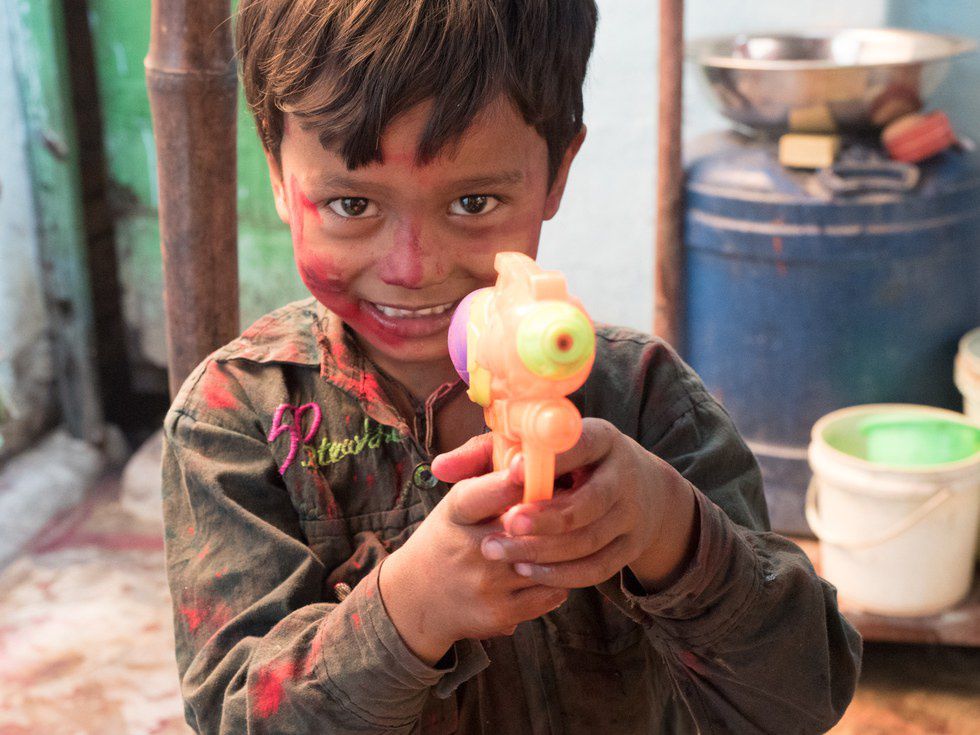On a very basic level, the Indian festival of Holi celebrates the triumph of “good” over “evil” through an evening of bonfires and a day of color throwing. It is a celebration that breaks down all societal barriers between people, and for a day, the rules by which everyone abides by in their daily lives are forgotten in the name of play and enjoyment. I have been traveling around India with my dad since February, and we ended up spending Holi in Varanasi in a neighborhood directly off the river.
We began the morning with a quiet boat ride away from the main ghats. We were swaying gently on the water and observing people’s morning routines on the bank of the river, when the boatman, Rajesh, invited us to his home for tea.
He parked the boat and we climbed up the enormous steps that joined the river and the neighborhood. The path to his house was composed of narrow, windy streets lined with tall buildings of turquoise and yellow hues. We rounded a corner where there were several people surrounding the remnants of a bonfire. Just as I was about to continue, Rajesh motioned for me to enter a building. The lack of uniformity and subtleness of the doorways would have caused me to walk right past his house had he not been there.
When we first arrived, we were greeted by around five people, but the longer we stayed, the more people seemed to emerge from hidden areas of the house. We sat and talked to his mother while his sisters prepared tea, and his younger siblings began to appear from other rooms of the house.
It became apparent that it was time to begin the Holi celebrations when his mother brought out some color powder and gently covered my face with it, exclaiming “Happy Holi!!”
This opened the floodgates for the younger children. They began running around the house armed with their red powder. Not even the baby, who whined in opposition, was spared from a bit of color on his cheeks.
They soon switched to wet color by mixing the powder with water and filling tiny water guns. The two children scampered around the room spraying each other, their parents, the walls, or anything they believed would look better in pink.
What I found most compelling about this playing of Holi was the pureness of their joy. Occasionally, a conflict would break out over an unfair advantage that one of them had, but it was quickly forgotten and replaced by arcs of pink liquid. The happiness that comes from physical play is one that is slowly forgotten as we age, but luckily, in India, there is one day per year where some good old-fashioned mischief is encouraged.



















